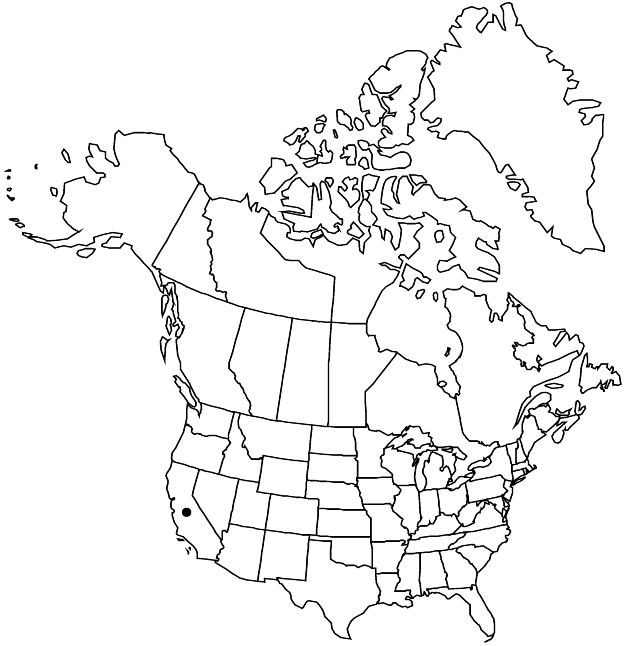Difference between revisions of "Sedella pumila"
New N. Amer. Crassul., 45. 1903,.
FNA>Volume Importer |
FNA>Volume Importer |
||
| Line 13: | Line 13: | ||
|name=Parvisedum congdonii | |name=Parvisedum congdonii | ||
|authority=(Eastwood) R. T. Clausen | |authority=(Eastwood) R. T. Clausen | ||
| − | }}{{Treatment/ID/Synonym | + | }} {{Treatment/ID/Synonym |
|name=Parvisedum pumilum | |name=Parvisedum pumilum | ||
|authority=(Bentham) R. T. Clausen | |authority=(Bentham) R. T. Clausen | ||
| − | }}{{Treatment/ID/Synonym | + | }} {{Treatment/ID/Synonym |
|name=Sedella congdonii | |name=Sedella congdonii | ||
|authority=(Eastwood) Britton & Rose | |authority=(Eastwood) Britton & Rose | ||
| − | }}{{Treatment/ID/Synonym | + | }} {{Treatment/ID/Synonym |
|name=Sedella pumila var. congdonii | |name=Sedella pumila var. congdonii | ||
|authority=(Eastwood) Jepson | |authority=(Eastwood) Jepson | ||
| − | }}{{Treatment/ID/Synonym | + | }} {{Treatment/ID/Synonym |
|name=Sedum congdonii | |name=Sedum congdonii | ||
|authority=unknown | |authority=unknown | ||
| − | }}{{Treatment/ID/Synonym | + | }} {{Treatment/ID/Synonym |
|name=Sedum pumilum var. congdonii | |name=Sedum pumilum var. congdonii | ||
|authority=(Eastwood) Fröderström | |authority=(Eastwood) Fröderström | ||
| Line 43: | Line 43: | ||
|elevation=30-1500 m | |elevation=30-1500 m | ||
|distribution=Calif. | |distribution=Calif. | ||
| − | |discussion=<p>Flowers of Sedella pumila have a noticeably musty odor. The Oregon specimen of Sedum pumilum cited by R. T. Clausen (1975) as needing confirmation is not of this species, and the Nuttall specimen cited for Oregon by W. H. Brewer et al. (1876–1880, vol. 1) is of doubtful origin (R. V. Moran 1998).</p><!-- | + | |discussion=<p>Flowers of <i>Sedella pumila</i> have a noticeably musty odor. The Oregon specimen of <i>Sedum</i> pumilum cited by R. T. Clausen (1975) as needing confirmation is not of this species, and the Nuttall specimen cited for Oregon by W. H. Brewer et al. (1876–1880, vol. 1) is of doubtful origin (R. V. Moran 1998).</p><!-- |
| − | --><p>Although W. L. Jepson (1909–1943, vol. 2) called Sedella congdonii a dubious variety of S. pumilum, H. K. Sharsmith (1936) and all later authors have kept it as a distinct species. The two taxa have broadly overlapping ranges and the same chromosome number, and although some specimens are different enough, they are connected by many intermediates. It does not seem practical to separate them (R. V. Moran 1998).</p> | + | --><p>Although W. L. Jepson (1909–1943, vol. 2) called <i>Sedella</i> congdonii a dubious variety of S. pumilum, H. K. Sharsmith (1936) and all later authors have kept it as a distinct species. The two taxa have broadly overlapping ranges and the same chromosome number, and although some specimens are different enough, they are connected by many intermediates. It does not seem practical to separate them (R. V. Moran 1998).</p> |
|tables= | |tables= | ||
|references= | |references= | ||
| Line 68: | Line 68: | ||
|publication year= | |publication year= | ||
|special status= | |special status= | ||
| − | |source xml=https://jpend@bitbucket.org/aafc-mbb/fna-data-curation.git/src/ | + | |source xml=https://jpend@bitbucket.org/aafc-mbb/fna-data-curation.git/src/8f726806613d60c220dc4493de13607dd3150896/coarse_grained_fna_xml/V8/V8_396.xml |
|genus=Sedella | |genus=Sedella | ||
|species=Sedella pumila | |species=Sedella pumila | ||
Revision as of 19:06, 18 September 2019
Plants 0.3–1.7 dm, usually with erect branches ± equaling main axis, or branches spreading; hypocotyl 0.5–2.5 cm. Stems 10–25-noded. Leaf blades 0.4–0.7 × 0.1–0.3 cm. Cymes 1–5-branched, 5–15-flowered, 1–5 cm. Flowers 4–10 mm diam.; calyx base tapering to pedicel; petals widely spreading, erect in fruit, straw colored to bright yellow, commonly red-marked on keel, elliptic to lanceolate, 2.5–5 × 0.3–1.2 mm, apex acute; stamens 10; pistils 1–2 mm, stipitate-glandular near suture and on angles, often with papillae on suture; styles erect, or, when short, often recurved, 0.3–1.2 mm. Utricles erect or ascending, 1.2–2.5 mm. Seeds 0.8–1.5 mm. 2n = 18.
Phenology: Flowering spring.
Habitat: Gravelly soils, vernal pools, thin soil on outcrops of serpentine, limestone, lava, or granite, often in mat of moss
Elevation: 30-1500 m
Discussion
Flowers of Sedella pumila have a noticeably musty odor. The Oregon specimen of Sedum pumilum cited by R. T. Clausen (1975) as needing confirmation is not of this species, and the Nuttall specimen cited for Oregon by W. H. Brewer et al. (1876–1880, vol. 1) is of doubtful origin (R. V. Moran 1998).
Although W. L. Jepson (1909–1943, vol. 2) called Sedella congdonii a dubious variety of S. pumilum, H. K. Sharsmith (1936) and all later authors have kept it as a distinct species. The two taxa have broadly overlapping ranges and the same chromosome number, and although some specimens are different enough, they are connected by many intermediates. It does not seem practical to separate them (R. V. Moran 1998).
Selected References
None.
